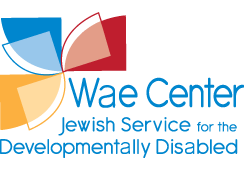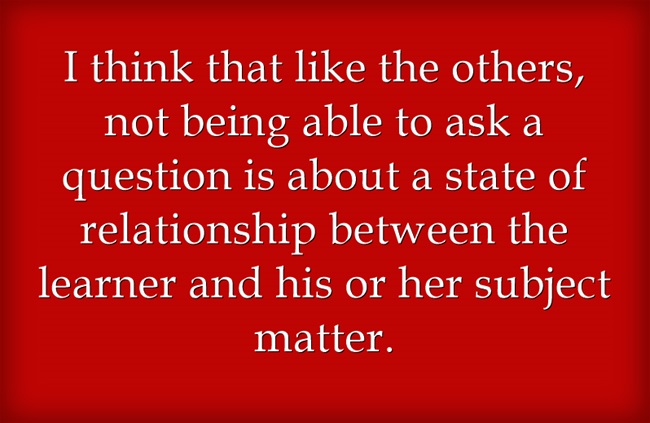 Why is the fourth child unable to ask a question at the Seder? I want to approach this question by first telling you a story about what took place on a recent Sunday morning at Beth Shalom, when a group of thirty-five developmentally disabled adults from the WAE (Welness, Arts, Enrichment) Center stood behind us in Lester Hall for a non-traditional Passover seder experience. Twenty of our Teen Leadership participants, with thanks to members of the inclusion committee, prepared eight activity stations to help the group connect with the Passover story. The participants played a Passover board game, answered jeopardy style questions, watched videos, made their own Hillel sandwiches and seder plates and, of course, ate different traditional seder foods, all as we strove to connect the residents to the Passover story from a wide variety of perspectives.
Why is the fourth child unable to ask a question at the Seder? I want to approach this question by first telling you a story about what took place on a recent Sunday morning at Beth Shalom, when a group of thirty-five developmentally disabled adults from the WAE (Welness, Arts, Enrichment) Center stood behind us in Lester Hall for a non-traditional Passover seder experience. Twenty of our Teen Leadership participants, with thanks to members of the inclusion committee, prepared eight activity stations to help the group connect with the Passover story. The participants played a Passover board game, answered jeopardy style questions, watched videos, made their own Hillel sandwiches and seder plates and, of course, ate different traditional seder foods, all as we strove to connect the residents to the Passover story from a wide variety of perspectives.
 Now, when I first sat down with the WAE center in West Orange to talk about how we might collaborate to best connect their residents to Pesach, their angle had been to hold a traditional Passover Seder. The plan was to sit the residents around tables, eat, and go through the Seder itself. However, I must confess that once I walked through the WAE Center, which stands for Wellness, Arts, and Enrichment and saw the different forms of artistic expression, I realized that for these residents to connect to Pesach there had to be more than just sitting around a table. That’s why we planned this type of activity.
Now, when I first sat down with the WAE center in West Orange to talk about how we might collaborate to best connect their residents to Pesach, their angle had been to hold a traditional Passover Seder. The plan was to sit the residents around tables, eat, and go through the Seder itself. However, I must confess that once I walked through the WAE Center, which stands for Wellness, Arts, and Enrichment and saw the different forms of artistic expression, I realized that for these residents to connect to Pesach there had to be more than just sitting around a table. That’s why we planned this type of activity.
Indeed, as the program went on, it became clear that each of the residents had a different way of connecting. There were some participants, probably not unlike many of our own seder participants, who told us that they really just wanted to eat. Some appreciated the opportunity to watch a fun Passover video. Others connected through a board game. Still others took seriously the opportunity to learn about examples of modern slavery. What I think made this program so successful was not only the hard work of our teens, but that every participant could learn in the way that was best for them.
At our seder we miss the point that in addition to the standard four, there are supposed to be a second set of four questions. These are the questions asked by keneged arba’ah banim, the questions of the four children that the Torah envisions will be present at our Seder. There are three children that are able to ask their question. They are the wise, wicked and simple children. But then we are then told that there is a fourth child who does not know how to ask a question. Why? If you look at artists’ renditions of this fourth child in your haggadah, you will notice that, often mistakenly I think, artists tend to depict this child as being a baby or very young. This artistic midrash implies that the fourth child cannot ask a question because he or she has not yet reached the age, maybe 3 or 4 years old, where they can ask a sophisticated question. Certainly, all of you know that I am going to be the last one to dispute this notion in its entirety, since despite my best efforts to get Zev to sing the Ma Nishtana, he has spent a good deal of his time talking about hot dogs and Elmo.
 However, I think it’s a mistake to infer age here, when none of the other three children and their qualities of wisdom, wickedness or simplicity are contingent on age at all. Rather, I think that like the others, not being able to ask a question is about a state of relationship between the learner and his or her subject matter. What I learned from our WAE Center visit is that this child who cannot ask a question is not unknowledgeable or unknowing. This is not a child who hasn’t learned to talk or a child or who can’t read or the child who can’t speak. This is an eino yodeh lishol: Someone who has an inability to connect to the material because it has not been taught to him or her in a way that they can understand and relate to it in order to ask that question in the first place.
However, I think it’s a mistake to infer age here, when none of the other three children and their qualities of wisdom, wickedness or simplicity are contingent on age at all. Rather, I think that like the others, not being able to ask a question is about a state of relationship between the learner and his or her subject matter. What I learned from our WAE Center visit is that this child who cannot ask a question is not unknowledgeable or unknowing. This is not a child who hasn’t learned to talk or a child or who can’t read or the child who can’t speak. This is an eino yodeh lishol: Someone who has an inability to connect to the material because it has not been taught to him or her in a way that they can understand and relate to it in order to ask that question in the first place.
As Jews, we are supposed to feel that there is something incomplete about our Sedarim when a fourth child leaves unable to ask a question. And that is why Sefer Mishlei teaches Chanoch Yeled KeDarko, that every child must be taught in a method that speaks to their own way, just as we did here, at TBS this past week. It is why Rabbi Tzidkiya ben Avraham, better known through his thirteenth century work the Shibulei HaLeket, teaches Aseh Lo Patach, that it is up to you, as the leader, to “create that – to innovate and to engage that person who does not know how to ask.” Sheyavin veyishal, so that your child will understand and then finally, enriched, can ask that fourth question and complete the Seder.
It’s easy to see the need for differentiated learning and using arts and wellness techniques in helping to engage developmentally disabled adults. But do our own families not need the same thing? Do we, too, not have fourth children incapable of asking questions? Do not all of us have that unknowledgeable cousin who comes to our Seder table, who sits quietly and leaves halfway through the meal, without so much as a thank you? Or a child or grandchild’s non-Jewish girlfriend or boyfriend whose first event is the family Passover seder? How do we get them to ask that fourth question, to complete our seder?
It is only by engaging creatively, year after year, so they may connect to the subject matter, that we may truly fulfill our obligation. For on Pesach we spend quite a lot of time preparing our Sedarim to be full of food. We expect no one, unless the poor soul is gluten-free or a vegetarian, to go away hungry. For many of us, this is the raison d’etre of the Seder. We open the Maggid section of our seder by singing the Aramaic words to Halachma Anya. We sing “Kol Dichfin Yetay VeYechol,” let all who are hungry come and eat. Yet, if we don’t look at the rest of that sentence, then we’ve also missed the point. Because the hunger that we feed on Pesach is not only for our hungry bodies, but for our neshamot, our souls. We sing, kol dichfin yetay veyechol, let those who are hungry come and eat, but also kol ditzrich yetay veyifsach, that to feed the hunger of our souls it is necessary for us to be full participants who connect and understand to what it means to be observe Pesach. And that can only be achieved when we have created an environment where all of us, including that fourth child, finally connects kedarko, and asks that fourth question, completing our seder.
 Rabbi Daniel Dorsch is the Assistant Rabbi at Temple Beth Shalom in Livingston, New Jersey. Rabbi Dorsch is a board member of MERCAZ-USA, the Zionist arm of the Conservative Movement, and is a member of the Board of Trustees of the New Jersey Rabbinical Assembly. He also contributes a monthly column for Haaretz.com’s Rabbi’s Round Table. Rabbi Dorsch and his wife, Amy, reside in Livingston and are the proud parents of Zev Noam.
Rabbi Daniel Dorsch is the Assistant Rabbi at Temple Beth Shalom in Livingston, New Jersey. Rabbi Dorsch is a board member of MERCAZ-USA, the Zionist arm of the Conservative Movement, and is a member of the Board of Trustees of the New Jersey Rabbinical Assembly. He also contributes a monthly column for Haaretz.com’s Rabbi’s Round Table. Rabbi Dorsch and his wife, Amy, reside in Livingston and are the proud parents of Zev Noam.
